Insta360 GO 3S vs Insta360 GO 3: should you upgrade?
Which is the better miniature action camera for ‘GO’ getters?

This newer model maintains the GO 3’s form factor while boosting video resolution and upgrading the accessory bundle
Pros
- Improved 4K video resolution at 30fps
- Camera waterproofed up to 33ft / 10m
- Includes Apple Find My
- Bundled with a new raft of handy accessories
Cons
- Minor update of the GO 3
- No 32GB storage option this time around
- Less battery life than its predecessor

This previous model is still a fun little action camera well worth investigating, especially if there are discounted deals now to be had
Pros
- Ultra convenient magnetic mounting
- User friendly shoot first, frame later functionality
- Lots of accessories provided out of the box
- Action Pod adds shedloads of functionality
Cons
- Lower resolution than competitors
- Wireless viewfinder occasionally glitches
- Modest low light performance lets it down
- Action Pod isn’t waterproofed like the camera is
It’s official, the Insta360 GO 3S is here, barely a year after the arrival of the Insta360 GO 3.
Like the original set up, there are two ‘elements’ at play: notably a thumb-sized camera unit and an excitingly named Action Pod docking station to sit it in. The latter handily provides a small-ish touchscreen plus a means of charging the device via USB-C port.
If you already own the Action Pod that came with a purchase of the existing GO 3, you’ll be pleased to learn the exact same Pod can be used with the newer GO 3S. Conveniently the devices share the same form factor, albeit at a very slightly different, higher weight for the newer iteration of the performance boosted camera unit.
So should you get up and ‘GO’ with the new 3S iteration? Or is the existing ‘3’ still the magic number?
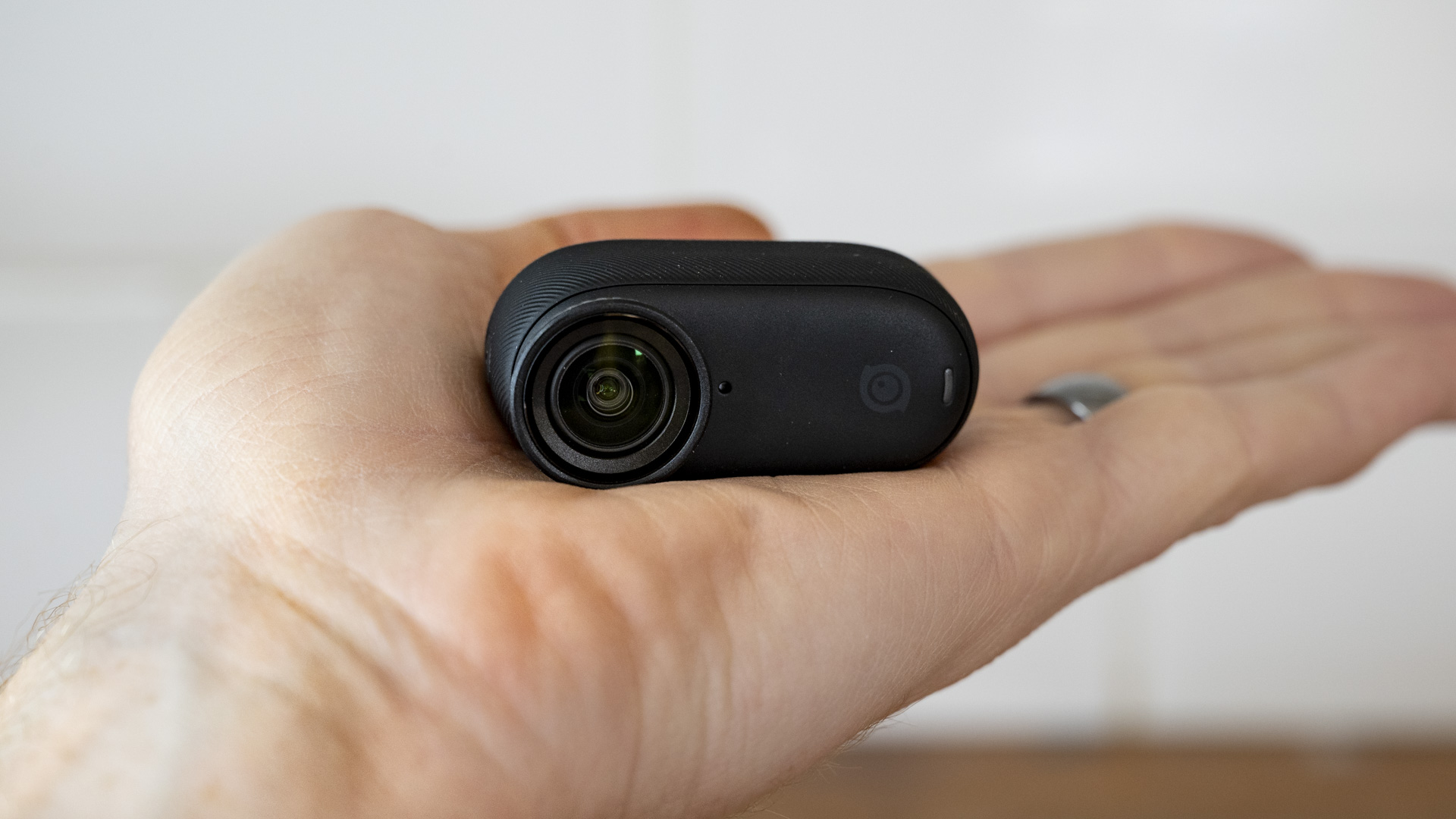
Insta360 Go 3S vs Insta360 Go 3: Price and availability
- Insta360 GO 3S Standard Bundle: $399.99 / £349.99 / AU$719.99 (64GB); $429.99 / £369.99 / AU$769.99 (128GB); Standalone $239.99 / £209.99 / AU$429.99 (64GB); $269.99 / £229.99 / AU$479.99 (128GB)
- Insta360 GO 3: $379.99 / £379.99 / AU$659 (32GB); $399.99 / £399.99 / AU$699 (64GB); $429.99 / £429.99 / AU$739 (128GB)
- Insta360 GO 3S Action Pod: $149.99 / £129.99 / AU$269.99
Announced a year after its predecessor, the new Insta360 Go 3S looks like fair value compared with the current Go 3. The previous model started out with a price of $379.99 / £379.99 / AU$659 for the lowest capacity 32GB unit, though bundled accessories included a magnetic lanyard, hat clip, tripod mount and adhesive plate, for whichever capacity was chosen.
By contrast we can now get in on the action with a standalone 64GB Insta360 GO S – ‘standalone’ meaning no Action Pod or accessories, which will appeal to those considering a straight upgrade – for what sounds like a very reasonable $239.99 / £209.99 / AU$429.99. The 128GB version of the latest iteration is also so close in price to the 64GB offering that, for the cost of a couple of takeaway pizzas, going for the higher capacity GO 3S feels like a no brainer here.
Unlike the existing Insta360 Go 3, there is no lower 32GB capacity being offered this time around with the Go 3S model, undoubtedly as a result of video resolution being upped from 2.7K on the Go 3 – itself an improvement on the 2.7K of its own forebear – to a more data hungry 4K on the Go 3S.
Sign up for breaking news, reviews, opinion, top tech deals, and more.
It seems from the off that if you don’t already own the Go 3 or indeed a GoPro, then opting for the Insta360 Go 3S if seeking a very small, very portable action camera as a smartphone alternative is the sensible choice.
We’re getting some very welcome tweaks on the newer model that, while in themselves feel like an evolution rather than revolution, nevertheless come at a price that will make newer converts believe they’re achieving decent value for money.
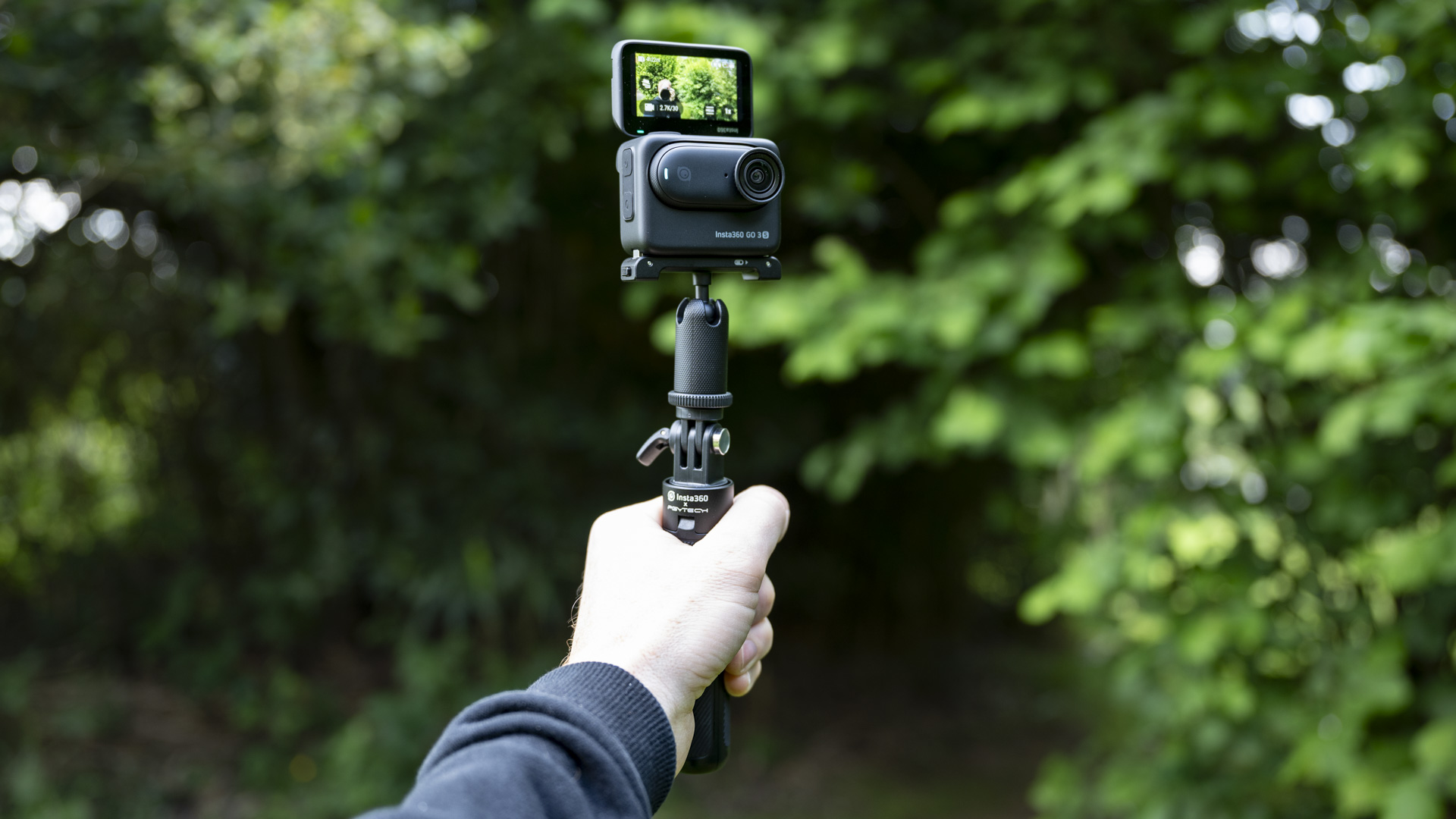
Insta360 Go 3S vs Insta360 Go 3: Design and handling
- Insta360 Go 3S: 1.38oz / 39.1g, compatible with existing Action Pod
- Insta360 Go 3: 1.25oz / 35.5g, compatible with Action Pod
Taking the ‘if it ain’t broke, don’t fix it’ approach, the latest Insta360 Go 3S comes in the same choice of Arctic White or Midnight Black livery as its Insta360 Go 3 predecessor.
Likewise maintaining the same thumb-sized form factor, it once again features a magnetic body that weighs just 1.38oz / 39.1g, compared to its forebear’s ever so slightly lighter 1.25oz / 35.5g. Both weigh about a tenth of a typical point and shoot digital camera, enabling this device to be worn about the person for hands-free, first person point-of-view shooting.
As with the last model, the claim is that the Go 3S is so light we can clip it to a shirt, hat, helmet or bag and essentially forget it’s there.
This also allows for a more discreet fly-on-the-wall shooting style, as well as avoiding the need to carry around a bulky camera if we’re out sightseeing all day.
Being magnetic, either the Go 3 or Go 3S can be usefully stuck to any metal surface such as pipes and fridges, to provide a unique angle on the action.
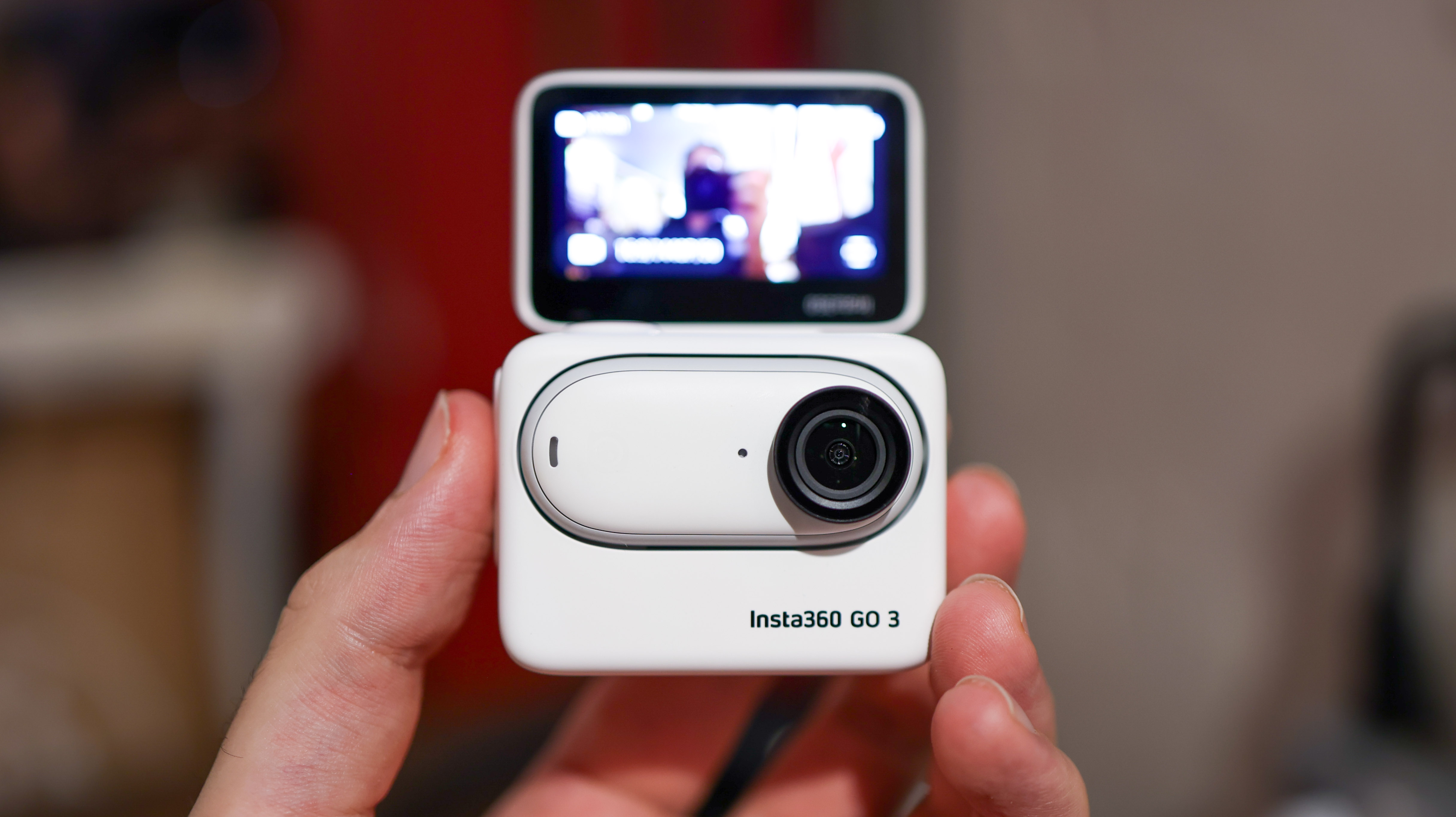
As noted, both core camera units can be placed in the same Action Pod docking device that, in being unchanged since the Go 3, itself weighs a mere 96.3g. The advantage here is that there’s the provision of a flip-out 2.2-inch touchscreen, plus, thanks to Wi-Fi control, the Pod can be used as a remote viewfinder when the camera element isn’t even docked, which is handy for previewing images. The Pod further provides a means via the core camera unit is charged thanks to built-in USB type C connectivity.
Charging time is exactly the same for either Go 3 or Go 3S at 65 minutes to achieve a fully charged battery. And as both new and old camera and the existing Action Pod feature the same magnetic mounting mechanism, the same accessories can be used with both.
Further falling under the heading of ‘handling’ there’s the fact that the newer Go 3S is now compatible with the Apple Find My, providing added security and peace of mind should it ever get misplaced. An Easy Switch mechanism now allows for camera orientation to be swapped on the fly. A simple twist of the camera effects a rapid change from horizontal to vertical shooting, or vice versa.
For those who like to get wet there’s the opportunity here to use the Go 3S' camera element, not Action Pod dock, to a watery depth of an extended 33ft or 10m. This is an improvement on the maximum 16ft / 5m of the existing Go 3.
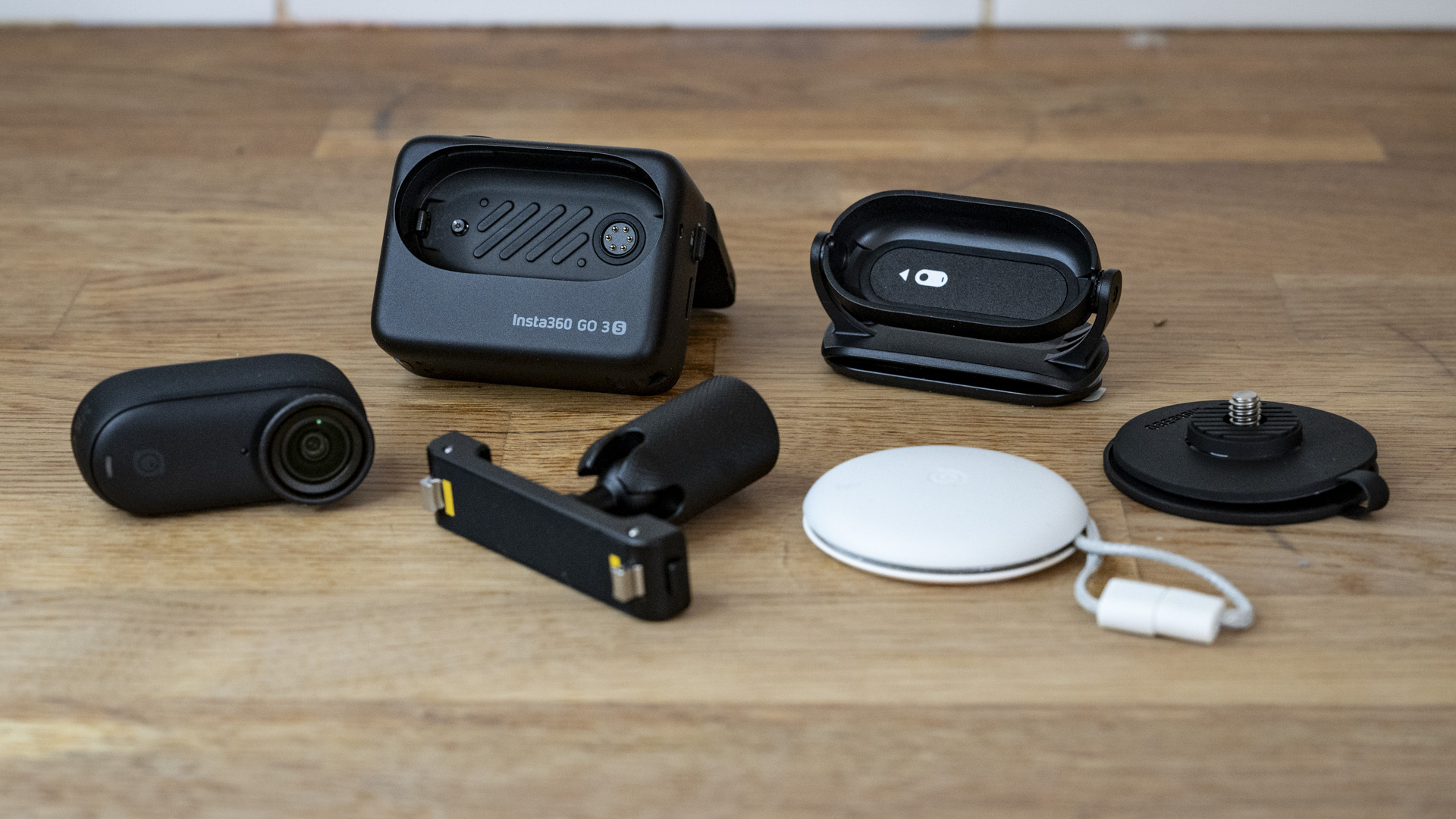
Insta360 Go 3S vs Insta360 Go 3: Sensor and image quality
- Insta360 GO 3S: 4K video, 12Mp photos, slightly wider lens
- Insta360 GO 3: 2.7K video, 6.6MP photos
We’re told that the Insta360 Go 3S is ‘mightier’ than last year’s Insta360 Go 3, which translates as the new cam on the block boasting an enhanced chip with 50% more CPU computing power.
In terms of the images delivered, the newer model comes with a slightly wider angle lens but it’s in the area of video performance where we feel the newer Go 3S will stand out. This is thanks to resolution being ramped up to 4K at a smooth 30 frames per second, to go with the provision of a couple of slow motion recording options at lower resolution settings, now up to 200fps in 1080p.
Otherwise several core features have stayed exactly the same. These include a light sensitivity range still stretching from ISO100 to a so-so ISO3200, so we’re envisaging there won’t be much of an improvement, if at all, on the Go 3S when it comes to shooting in lower light conditions. Shutter speed, exposure, white balance and audio modes likewise remain unchanged from model to model.
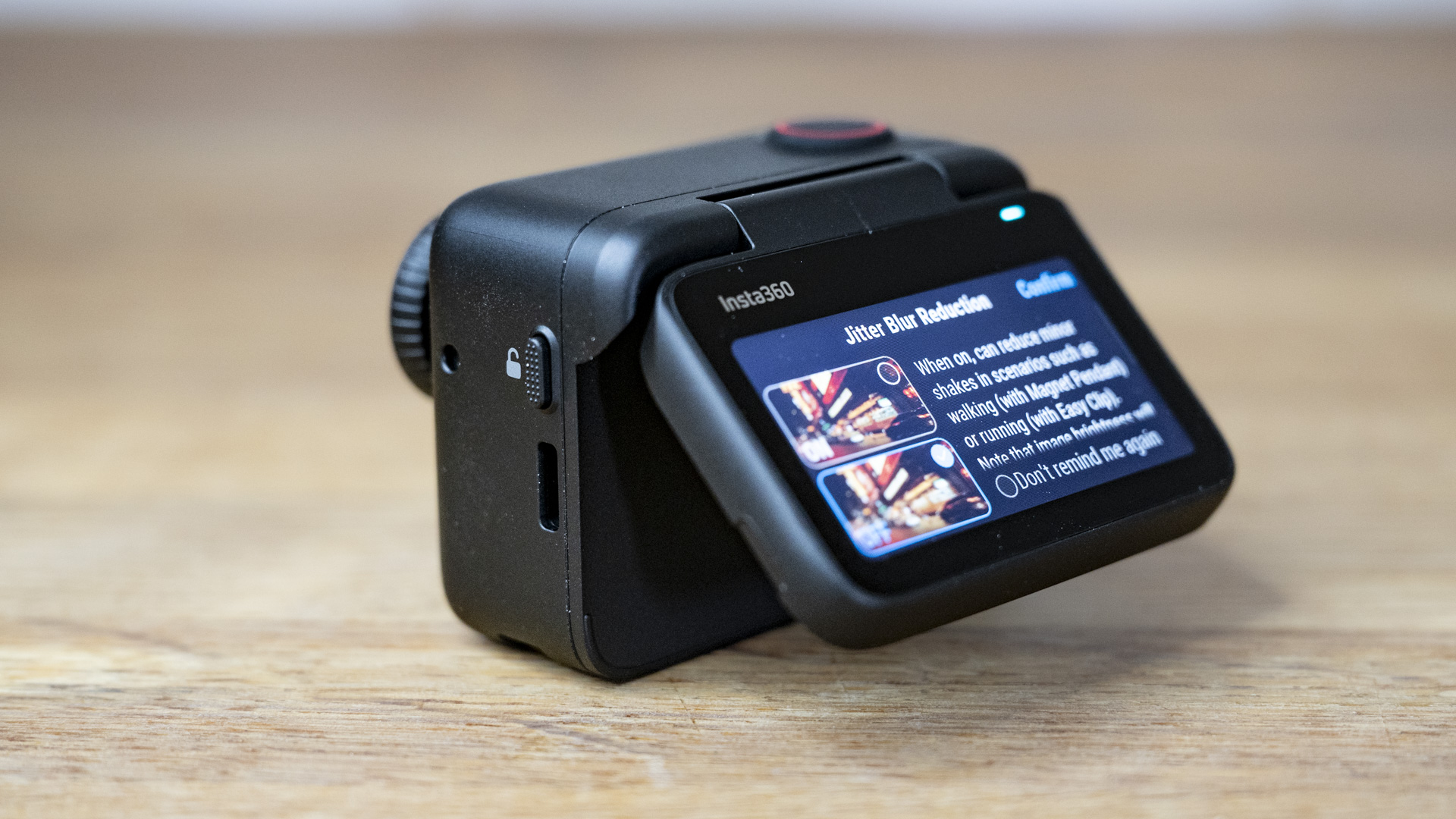
Insta360 Go 3S vs Insta360 Go 3: Autofocus and performance
- Insta360 Go 3S: Interval recording, Gesture control, auto aspect ratio. MegaView field of view, more dynamic range in video, up to 200fps
- Insta360 Go 3: Pre-recording, Up to 100fps, only 2.7K video
Whereas the earlier Insta360 Go 3 offered video users a choice of pre-recording and loop recording, the latest just as tiny Go 3S iteration adds a new interval video option for even more automated hands-free operation.
Interval video now allows users to set how often the camera should record along with the duration of each recording, and, much like a trail camera, the device will automatically power on and shoot a series of clips as designated.
In tandem with the Go 3S’s new Instant Preview app, only available for iOS only, users can receive notifications to their smartphone when shooting has finished, thereby allowing them to open and start editing the clip with a screen tap. Furthermore, for the laziest of content creators there’s an Auto Edit function in the app that lets AI automatically do all the hard work of editing clips into a single longer video. Alternatively we can opt to stick with manual editing if preferred.
AI further comes into play when using the Insta360 Go 3S via AI Gesture Control. As it sounds, if the camera is positioned out of reach then hand gestures – no guffawing at the back – can be used for starting or ending recording, or to instruct the device to take a photo.
But we believe the biggest change under the hood with the GO 3S is the hike in video resolution to an industry standard 4K at a cinematic 30fps. It’s claimed that users will notice their footage is sharper and crisper straight out of the device compared with the Go 3’s performance.
The Go 3S’ image quality is claimed to have been taken up a further notch via the inclusion of ‘MegaView FOV’, said to provide a more ‘realistic’ representation of scene and subject, with less distortion and cleaner, straighter edges to the image.
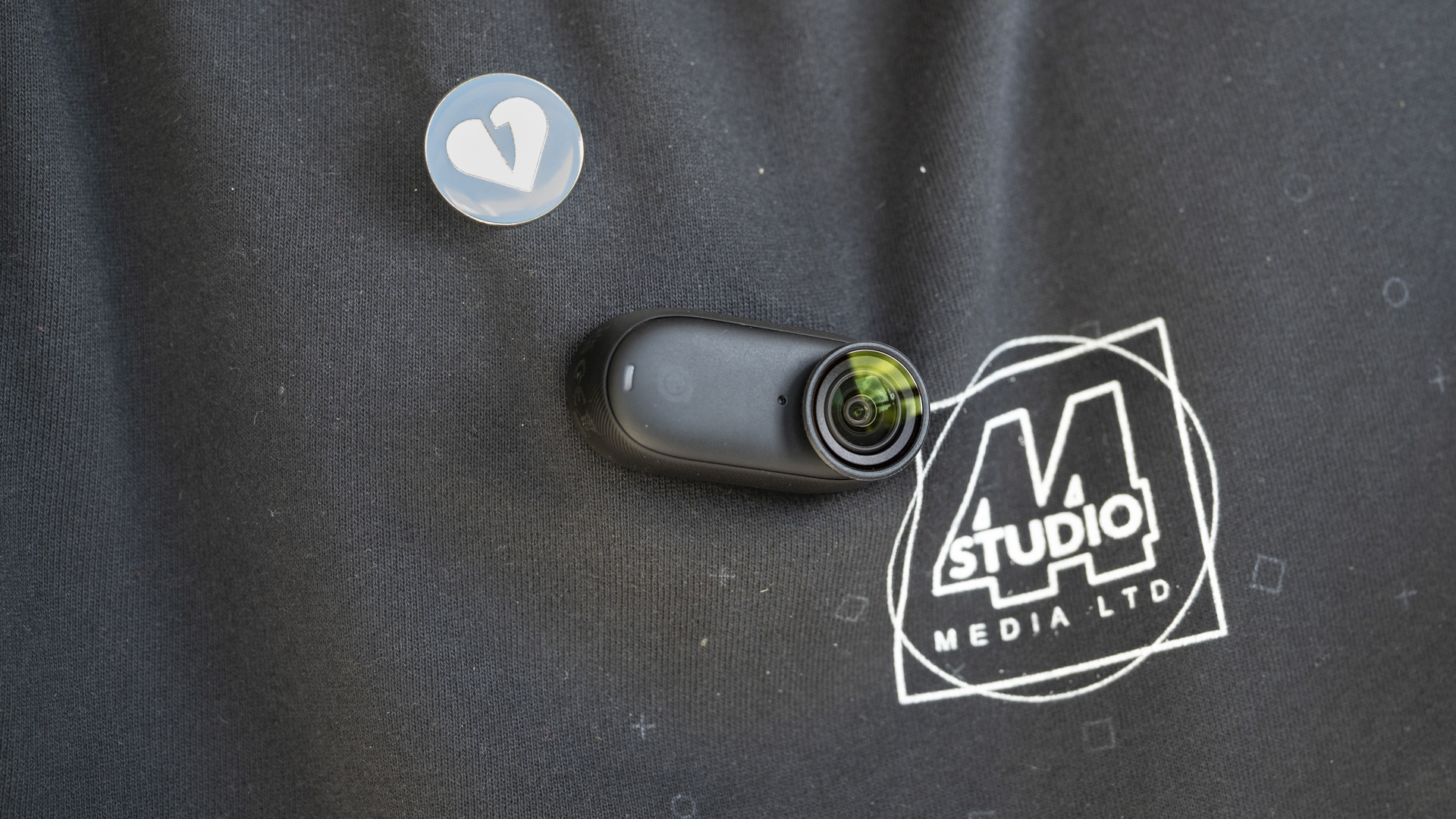
The Insta360 Go 3S is further claimed as being Dolby Vision Ready, thanks to new HDR – High Dynamic Range – technology that provides imagery with not only greater dynamism but also enhanced detail with it.
Want slow motion video? The Go 3S offers a couple of options via shooting at up to 200fps at a high definition 1080P, or at 100fps at 2.7K, which is the maximum resolution offered by its Go 3 forebear.
Otherwise it’s 4K at 30fps, as already detailed on the newer model. In terms of stills resolution, this has been quietly upped from 6MP in DNG format on the Go 3 to 12MP equivalent on the GO 3S; though in the days of consumer cameras that can shoot 100MP, albeit for a substantial price hike, the Insta360’s latest offering feels adequate rather than anything to write home about. At least smaller file sizes are more social media friendly.
Insta360 Go 3S vs Insta360 Go 3: Image stabilization, battery life & additional features
- Insta360 Go 3S: 100% charged within 65 minutes via Action Pod, 140 minutes run time
- Insta360 Go 3: 100% charged within 65 minutes, 170 minutes run time
Although both devices when paired with the Action Pod can be 100% charged within just over one hour, the newer Insta360 Go 3S offers a shorter 140 minutes run time, whether we’re talking the 64GB or 128GB version, compared with the previous Go 3’s more generous 170 minutes.
To enable smooth and level video capture on the Go 3S we’re gifted Insta360’s ‘FlowState’ stabilisation and Horizon Lock function, which means we can have fun attaching the camera to our dog’s collar, or simply get steadier, more usable footage when recording on the move. Both models however feature the same six-axis gyroscope at their core.
For accessory fans there are several new additions and upgrades that you’ll receive if choosing the ‘Standard’ bundle option with the Go 3S. These include a magnetic pendant to which the camera can obviously be attached. It’s claimed this provides improved heat dissipation enabling it to be worn more comfortably. It’s suggested this should make for an easy means of children achieving a POV style recording.
Further accessories this time around include a pivoting stand for even more creative and convenient shooting angles, while the latest iteration of this accessory can cope with slightly curved surfaces. Also curved is a newly designed lens guard, while an all-new Quick Reader allows for footage to be backed up to microSD card, even while the camera is being charged.

Which one should I buy?
If you don’t own either of these miniscule action cameras then opting for the Insta360 Go 3S with its improved 4K video capture and redesigned accessory bundles to suit a range of price points feels like a no brainer. Plus, those who already own a Go 3 have a chance to save a little by opting for the standalone camera unit, as the existing Action Pod docking device will work with both devices.
That said the differences here don’t feel massive enough to have us chucking the plain old Go 3 in the bin and ordering a Go 3S with a sense of urgency. The Insta360 Go 3S very much feels like evolution as opposed to revolution. You can find out more in our full review of the latest model.
You might also like

When not wrestling wild bears or leaping tall buildings in a single bound, Gavin Stoker can be found editing British Photographic Industry News, the UK's longest running and only photo trade title. He has over 25 years of camera testing and reviewing under his belt.